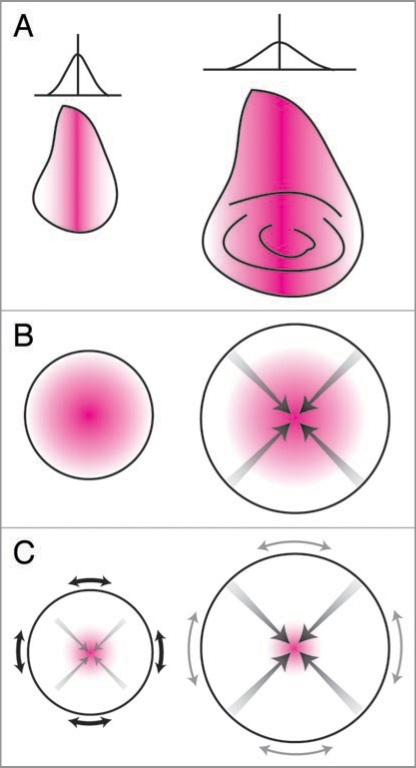Figure 5.
The autonomous regulation of organ size. (A) Day and Lawrence Model.91 The expression of a morphogen (e.g., Dpp) along the axis of an organ (e.g., the wing) establishes a morphogen gradient perpendicular to the axis (left). Growth stops when the morphogen gradient becomes sufficiently flat (right). (B) Shraiman model.100,108 A growth factor at the center of an organ promotes growth. Growth at the center stops when the positive effects of the growth factors are matched by the negative effects of compression (gray arrows), and at the periphery when the tissue grows beyond the range of the growth factor. (C) Aegerter-Wilmsen Model:107 A growth factor at the center of the organ promotes growth, which causes stretch at the periphery (black arrows), which in turn promotes growth at the periphery. Peripheral growth does not completely remove stretch, causing compression at the center of the organ. Growth stops when compression at the center overcomes the effects of the growth factor, eliminating additional stretch at the periphery (gray arrows) and stopping growth there also. Magenta area indicates morphogen. Adapted from ref. 92.

